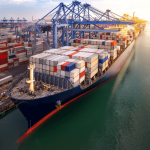Civilizations are known to have developed around water bodies across the world as it was necessary to meet various everyday requirements such as drinking water, irrigation, and fishing etc. Even in modern times, cities and population centers have emerged near waterbodies with commerce and sustainability becoming the main advantages. However, there are communities that live on the water rather than next to it. Known as floating villages or boat communities, these settlements on the surface of inland water bodies were developed due to various reasons such as ethnic and occupational in different parts of the world.
Here is a list of few such floating villages located in various part of the world.
Tonle Sap, Cambodia
One of the freshwater lakes in Cambodia, Tonle Sap, houses hundreds of floating villages. The floating village in this region is a result of the size of the lake which fluctuates in seasons. The lake which expands to a 31,000 square kilometres area in the wet season regarded to be the largest freshwater lake in Asia and the largest freshwater floodplain in the world. According to reports, there are almost 170 floating villages sitting on towering stilts in the lake. The lake was included in the United Nations’ Biosphere list in the year 1997.
Mogen, Thailand
Living in boats in the waters surrounding South East Asia, these sea gypsies, known as Mogens, were first brought to notice after the 2005 tsunami since none of them was victims of the natural calamity. The nomadic community inhabit the waters off Burma, Thailand, Malaysia, and Borneo. They lead a simplistic life spending their lives on boats, following unique customs and traditions and speaking a language completely different to the existing ones around them. The origin of the community remains uncertain as some scholars believe it is Indonesia; some believe they came from India. As part of the Thai government’s effort to issue them Thai citizenship, the name of this nomadic people has officially changed to Thai Mai or new Thai.
Uros, Peru
The Uros people of Lake Titicaca in the Latin American country of Peru have created their own floating reed islands. Made with a special kind of reed – Totora – that is available only in this region, their homes, despite their traditional lifestyle, features products such as televisions and radios etc. While each island that is part of the community has reed houses, the biggest island features a watchtower. According to their folklore, they were once God’s chosen but later on discarded and banished as inferiors because of avarice and other vices. At present, the community makes its living from fishing and tourism.
Day-asan
Day-asan Floating Village in Surigao City, Philippines is a fishing village known for its houses on wooden stilts on the surface water. Popularly known as Little Venice of Surigao City, the village is home to around 1,800 people. In this floating village, houses are built on wooden stilts or piles of rock in the shallow water and feature waterways and small pedestrian bridges. In addition to the house standing on water, the village also has village meeting houses known as purok centres for public gatherings. The villagers make their living from fishing and also raise fish and lobsters in enclosures in the village.
Ha-Long Bay
Located in Vietnam, the Ha-Long or Halong Bay’s floating village comprises of four villages where people sustain themselves through fishing and fish cultivation activities. Ha-Long, which means a dragon that descends, refers to the native folklore of dragons protecting the bay from invasion threats. Originally emerged as a place for returning fishermen to sell their catch, Halong Bay was later turned into a floating village. Now the floating villages have around 1,600 people living in four fishing villages such as Cua Van, Ba Hang, Cong Tau and Vong Vieng. Sustained through fishing and marine aquaculture, each village in Ha-Long Bay is a completely self-contained society. Recognizing its cultural relevance, UNESCO has designated the Halong Bay area as a World Heritage site.
Ganvie
Situated on the waters of Lake Nokoué, the stilt village of Ganvie is a residential formation comprising people of Tofinu ethnicity. First built in the 16th century, the village was created when escaping from Fon warriors, who tried to kidnap people to feed the slave trade and selected the region since invaders, held a belief that no kind of war could be waged either over or underwater. With a population of almost 20,000 people, the village now features school, hospital, floating shops and even a hotel targeting tourists. The mode of transportation used by the villagers is kayaks while the main occupation is fishing and trading fruits and vegetables. Known as the Venice of Africa, Ganvie is now Africa’s largest lake village.
Yawnghwe
Located on the Lake of Inle, the floating village of Yawnghwe has a cluster of 17 hamlets that has a population of around 70,000 people. The Lake of Inle is the second largest lake in Myanmar featuring an estimated surface area of 116 km. In the floating village of Yawnghwe, the houses are built on stilts and kayaks are used for transportation. Fishing is the main activity in the village while trading of vegetables and fruits is also carried out for a living. Currently, the floating village of Yawnghwe is a major tourist attraction in the country.




